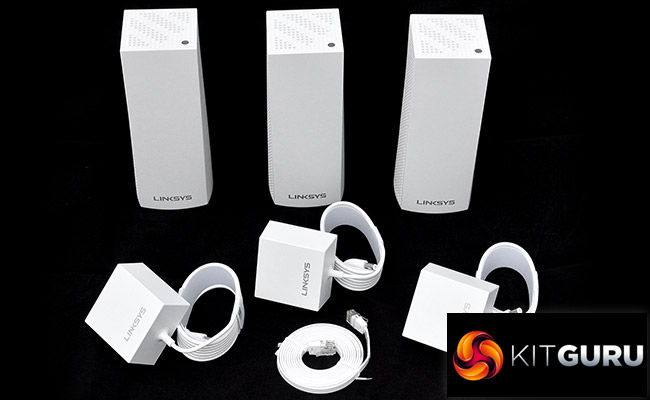The Linksys Velop isn't all bad. The styling is nicer than the Orbi's, and the smartphone-driven setup makes it accessible to a less tech-savvy audience. But otherwise NETGEAR has the jump on Linksys. The Orbi's performance is in a different league to the Velop's, and that's with just two satellites, thanks to having double the backhaul speed.
The extra Ethernet ports on the Orbi also make it more of a replacement for an existing router. The Velop, on the other hand, will need a separate switch or wired router to sit alongside a wired office network to provide enough ports for non-wireless systems.
With no USB either, there's an opportunity missed as well to use the extra node for convenient positioning of a USB-attached printer or storage device. There's no price advantage either, considering that the two-unit Velop costs around the same as the Orbi's two-unit pack. So, overall, if you're looking for greater WLAN coverage via mesh networking, NETGEAR's Orbi keeps its crown as the most effective option.
EDIT: 10th May 2017 – see our two unit follow up retest article over HERE.
Pros:
- Extended WiFi range compared to a single router.
- Easy step-by-step setup via smartphone.
- Smartphone access to advanced settings.
- Attractive, unobtrusive styling.
Cons:
- Performance eclipsed by NETGEAR Orbi.
- Relatively expensive.
- Only two Gigabit Ethernet ports on each unit.
- No USB ports.
Kitguru Says: The Linksys Velop uses mesh technology to provide larger WiFi coverage than a standalone router, but it's nowhere near as fast as NETGEAR's Orbi.
 KitGuru KitGuru.net – Tech News | Hardware News | Hardware Reviews | IOS | Mobile | Gaming | Graphics Cards
KitGuru KitGuru.net – Tech News | Hardware News | Hardware Reviews | IOS | Mobile | Gaming | Graphics Cards



